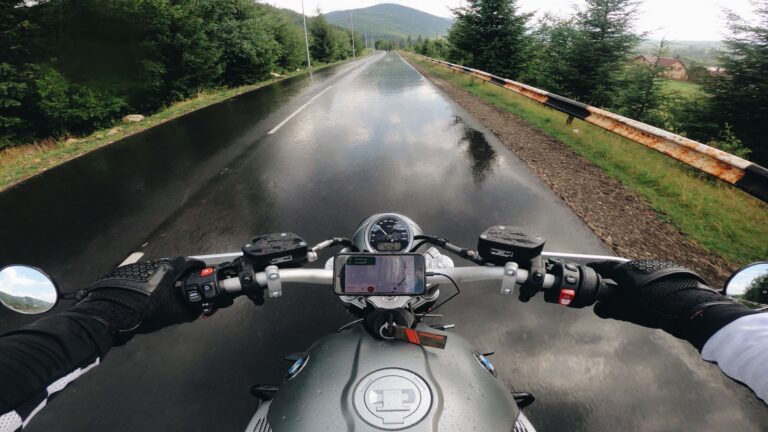
Riding a motorcycle in winter is an exhilarating yet demanding experience that calls for a unique set of skills and precautions. As the world transforms into a winter wonderland, the allure of hitting the open road on two wheels persists, albeit amidst plummeting temperatures and unpredictable weather conditions. Navigating icy roads, battling against chilling winds, and adapting to reduced daylight pose challenges that riders must face head-on. However, armed with the right knowledge, preparation, and a mindset geared toward safety, winter riding can be an adventure worth undertaking. Let’s delve into a comprehensive guide on how to maneuver through the frosty months while ensuring a thrilling and safe motorcycle journey.
Safety tips on riding a motorcycle in winter
- Dress appropriately: Wear multiple layers to keep yourself warm and insulated. Use thermal undergarments, a windproof and waterproof jacket and pants, gloves, and insulated boots. Don’t forget to cover your neck and face with a scarf or a balaclava.
- Check your motorcycle: Ensure your motorcycle is winter-ready. Check tire pressure, tread depth, brakes, lights, and fluid levels regularly. Consider using winter-grade oil for better performance in colder temperatures.
- Traction is key: Be extremely cautious on potentially icy or wet roads. Reduce your speed and increase your following distance to give yourself more time to react. Look out for black ice, which can be hard to spot but extremely slippery.
- Use the right tyres: Consider using specially designed winter tires or all-weather tires that provide better traction in colder conditions. Tires with deeper treads can help disperse water and improve grip.
- Be visible: Days are shorter in winter, so ensure your motorcycle lights are in good working condition. Wear high-visibility gear and reflective clothing to increase your visibility to other drivers.
- Brake gently: Braking distances increase in winter due to slippery roads. Apply brakes gently and avoid sudden maneuvers. Use both brakes in a balanced manner to avoid skidding.
- Keep your visor clear: Cold weather can cause your visor to fog up or collect condensation. Use an anti-fog solution or pinlock visor to prevent fogging. Stop periodically to clean your visor if needed.
- Stay alert: Cold weather can affect your concentration and reaction times. Take breaks to warm up if you start feeling too cold or fatigued.
- Plan your route: Stick to main roads that are more likely to be plowed or salted. Be aware that shaded areas might still be icy, so approach them with caution.
- Prepare for emergencies: Carry an emergency kit including a charged phone, first-aid kit, tools for minor repairs, and extra clothing in case you get stranded.
- Know when not to ride: Sometimes the weather conditions can be too extreme for safe riding. If conditions are too harsh or if you’re not feeling confident, it’s better to postpone your ride or find alternative transportation.
- Warm up the engine: Take some time to preheat the motorcycle before starting your ride. This will help improve the engine’s performance and subsystems in colder temperatures.
- Avoid large water puddles: Water puddles on the road can be very slippery, especially when the weather is cold. Try to avoid them or cross them cautiously.
Remember, safety should always be your top priority when riding a motorcycle, especially in challenging weather conditions like winter.
To discuss your motorcycle insurance needs click here.